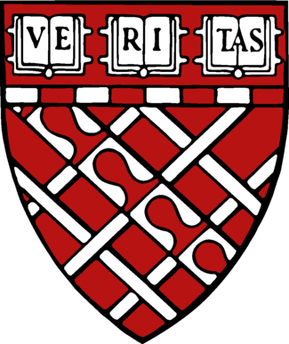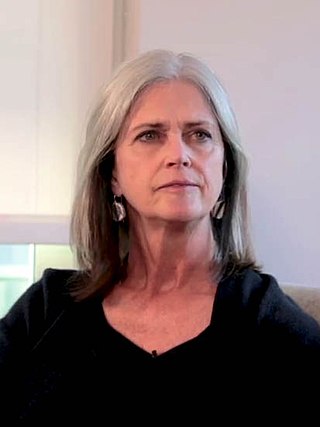
Graduate School of Architecture, Planning and Preservation (GSAPP) is the architecture school of Columbia University, a private research university in New York City. It is regarded as an important and prestigious architecture school. It is also home to the Masters of Science program in Advanced Architectural Design, Historic Preservation, Real Estate Development, Urban Design, and Urban Planning.

The Harvard Graduate School of Design (GSD) is the graduate school of design at Harvard University, a private research university in Cambridge, Massachusetts. It offers master's and doctoral programs in architecture, landscape architecture, urban planning, urban design, real estate, design engineering, and design studies.

Low technology is simple technology, as opposed to high technology. In addition, low tech is related to the concept of mid-tech, that is a balance between low-tech and high-tech, which combines the efficiency and versatility of high tech with low tech's potential for autonomy and resilience.

Farshid Moussavi is an Iranian-born British architect, educator, and author. She is the founder of Farshid Moussavi Architecture (FMA) and a Professor in Practice of Architecture at Harvard University Graduate School of Design.

Jeanne Gang is an American architect and the founder and leader of Studio Gang, an architecture and urban design practice with offices in Chicago, New York, San Francisco, and Paris. Gang was first widely recognized for the Aqua Tower, the tallest woman-designed building in the world at the time of its completion. Aqua has since been surpassed by the nearby St. Regis Chicago, also of her design. Surface has called Gang one of Chicago's most prominent architects of her generation, and her projects have been widely awarded.
Hashim A. Sarkis is a Lebanese educator and architect. Since 2015, Sarkis has been Professor and Dean of the School of Architecture and Planning at the Massachusetts Institute of Technology. He is also founding principal of Hashim Sarkis Studios since 1998.
Anita de la Rosa Berrizbeitia is a landscape theorist, teacher, and author. She continues to play an integral role in the renewed visibility of landscape architecture as a cultural practice. She is currently professor of landscape architecture at the Harvard Graduate School of Design and previous chair of the department of landscape architecture. Appointed in 2015, she served as the 14th chair of the oldest landscape architecture department in the world and only the second female to hold the position. Prior to coming to Harvard University she was the associate chair of landscape architecture at the University of Pennsylvania.
Petra Blaisse is a British-born Dutch designer. Her work is an intersection of the professions of architecture, interior architecture, landscape architecture, textile design, and exhibition design.
Andrea Cochran is an American landscape architect based in San Francisco. She is a fellow of the American Society of Landscape Architects and one of seven designer women featured in the 2012 documentary Women in the Dirt.

Toshiko Mori is a Japanese architect and the founder and principal of New York–based Toshiko Mori Architect, PLLC and Vision Arc. She is also the Robert P. Hubbard Professor in the Practice of Architecture at the Harvard University Graduate School of Design. In 1995, she became the first female faculty member to receive tenure at the GSD.

Deborah Berke is an American architect and academic. She is the founder of TenBerke, formerly Deborah Berke Partners, a New York City-based architectural design firm. Berke is currently Dean and J.M. Hoppin Professor at the Yale School of Architecture, where she began teaching as an associate professor in 1987. At the time of her appointment in 2016, Berke became the first woman Dean of the school. In 2022, Deborah received the AIA/ACSA Topaz Medallion for Excellence in Architectural Education.

Nina-Marie Lister is Professor and Graduate Director of the School of Urban and Regional Planning at Toronto Metropolitan University, where she also leads the Ecological Design Lab. In 2021, she was appointed a Senior Fellow of Massey College. From 2010 to 2014, she was a Visiting associate professor of landscape architecture and urban planning at Harvard Graduate School of Design. Her career has spanned private and public-sector work, integrating ecological science with planning and design. As both a researcher and a practitioner, she is founding principal of PLANDFORM, a creative design practice. Lister's work focuses on the intersection of landscape infrastructure and ecological processes in metropolitan areas.
Alvin Huang is a Chinese-American architect, educator, and designer based in Los Angeles, California. He is the founder of Synthesis Design + Architecture and an associate professor at the USC School of Architecture. In 2020, he was appointed the Director of Graduate & Post-professional Architecture at the USC School of Architecture.
Jennifer R. Bonner is an American architectural designer. She is an associate professor and Co-Director of the Master in Architecture II Program at Harvard University Graduate School of Design.
Susan Child (1928–2018) was an American landscape architect. She completed many residential, public, and historic preservation projects in New England.
Grace La is a first generation, Korean-American designer, Chair of the Department of Architecture and Professor of Architecture at the Harvard University Graduate School of Design (GSD), and Principal of LA DALLMAN. Co-founded with James Dallman, LA DALLMAN is a design firm recognized for the multidisciplinary integration of architecture, infrastructure, and landscape, with offices in Boston, MA and Milwaukee, WI. La previously served as the Chair of the Harvard GSD's Practice Platform and served as GSD's Director of the Master of Architecture Programs (2014–17).

Ana Maria Duran Calisto is an Ecuadorean architect, urbanist, and environmental planner who founded Estudio A0 with her husband and partner the architect Jaskran "Jazz" Kalirai in Quito, Ecuador.
Sara Zewde is an American landscape architect, co-founder of Studio Zewde, and assistant professor at the Harvard Graduate School of Design.
Miho Mazereeuw is an Associate Professor of Architecture and Urbanism in the Department of Architecture at MIT where she also directs the Urban Risk Lab. Mazereeuw is most known for her work in disaster risk reduction.
Billy Fleming is a landscape designer, city planner, and climate activist who currently serves as the Wilks Family Director of the Ian L. McHarg Center at the University of Pennsylvania School of Design. He is the founding director of the Center and is known for fusing climate justice and policy work with the landscape architecture and planning professions. He teaches, writes, lectures, and works on the intersection of climate change and the built environment, often through the policy framework known as the Green New Deal. He was one of the key instigators and organizers of the "Green New Deal Superstudio."











